
Issue #: 137
Published: September / October 2014
- Price per issue - digital : 5.40€Digital magazine
- Access to Multihulls World digital archives Digital archives
We are continuing to follow Olivier and his family around the world on board their catamaran Jaganda. Here we find them on the enchanting islands of Tahiti and Moorea.
The discovery of the Pacific Islands is a thrilling story. A story of which I never grow tired. I delved back into it with delight by setting sail for Polynesia on board our modern version of a two-hulled pirogue. Let’s go back to the second half of the 18th century, and the dawn of a few new ideas….
Arriving in mythical Tahiti
Contrary to popular belief, the first contact between Europeans and Tahitians did not go exactly…perfectly! Even if the mutual fascination was very quickly apparent between the two civilizations. It had taken only two years (the voyages of Captains Wallis, Bougainville and Cook between 1767 and 1769) to create a charming myth which endures to this day: that of the gentleness of the South Sea Islands. The first westerner to discover the island of Otaheiti was the English navigator Samuel Wallis, on board the Dolphin on June 17th 1767.
The following day, the ship sailed along the coast of Mehetia (an islet to the east of Tahiti) and then on the 19th stopped south of the Taiarapu peninsula. They were greeted by thousands of Tahitians in their outrigger canoes. The Dolphin, which needed to re-victual with fresh water and fresh food, carried up along the west coast of Otaheiti on the lookout for a bay with a safe and accessible anchorage. Finally they came back to Tiarei to try and re-provision. The natives, who knew nothing of metal, showed a great interest in everything metallic (knives, axes, nails, etc) that the Europeans carried and could be seen aboard the ship. Soon the natives’ greed was bordering on pillage, and the English sailors, very inferior in number, became obliged to defend themselves, using their weapons…the first confrontation.
But establishing a new balance of power wasn’t the only issue. A spell had been cast between the two civilizations. So it’s difficult to reconcile the difference in attitudes of the Tahitians, the respect and genuine hospitality, part of the Polynesian character, with that of the fear instilled by the efficiency of the firearms used by the crews of the European ships. The islanders, who only had weapons made of the natural materials found on their islands, had just begun to discover with Wallis and the Dolphin, the firepower associated with the presence of these ships: this was to be widely seen in the coming years, during the redefining of local power and overturning of alliances between the island Chiefs, which would later lead to the domination of the Pomaré dynasty, and to the eventual annexing of Tahiti by France.
The Tiaré flower, a Polynesian emblem
The brief visit to Otaheiti by Captain Wallis in 1767 was soon to be eclipsed by the arrival on the Polynesian stage, a few months later, of two more famous sailors: the Frenchman, Louis-Antoine de Bougainville (1768) and the Englishman James Cook (1769).
Leaving Otaheiti, Wallis had unknowingly prepared the welcome which was to greet Bougainville’s two vessels a few months later.
On April 2nd 1768 Louis-Antoine de Bougainville’s squadron consisting of the frigate La Boudeuse and the fluyt L’Etoile arrived off the Taiarapu peninsula. Bouganville looked for a practicable anchorage, but unfortunately he was concentrating on the east coast of Tahiti, more exposed to the wind and sea, and finally stopped in a terrible anchorage at Hitra. He left again on the 15th, after having lost 6 anchors and nearly being set down on the reef several times.
Except for several musket shots which led to two deaths among the natives, who were trying to steal equipment, these 9 days were sufficiently divine that Bougainville named Otaheiti, New Kythira. From the start, the Tahitians’ welcome was very warm, even more so the welcome of the Tahitian ladies… They offered themselves gracefully to the sailors as a sign of welcome! The squadron’s arrival in Tahiti, at the Baie d’Hitiaa, seems to have made many memories (I would have loved to have been there)…
The legend of Tahiti had begun, and it was Bougainville who carried across the seas:
“I felt as though I had been transported into the Garden of Eden. Everywhere we went we saw hospitality, peace, a gentle joy and every kind of happiness.”
Ignorant (or more likely pretending to be ignorant) of Wallis’ visit the previous year, Bougainville took possession of the island in the name of King Louis XV on April 12th 1768.
Exactly one year later, April 13th 1769, James Cook dropped the Endeavour’s anchor at Baie de Matavai, during the first of his three voyages to the South Pacific. The great English explorer, sailor and insatiable pioneer, stayed 3 months on the island, not leaving until July 13th. He drew the first charts, and with the academics who were with him, made the first scientific observations carried out in the South Pacific. Cook’s very thought-out and very structured approach to maritime exploration were to give his three successive expeditions an otherwise more consistent dimension (in terms of geographic discovery and scientific observation) than that of Bougainville, less successful in that sense, but perhaps more romantic. The captain of the French squadron is credited with having made a happy circumnavigation, which in Europe much contributed to the myth of the enchanted South Pacific islands.
Entering the passes requires a careful lookout: Marin has climbed to the masthead to go through the Haapiti Pass at Moorea…
Barbara’s logbook:
We departed Toau Atoll June 14th early in the morning, leaving also the Tuamotu archipelago, to arrive after 48 hours’ sail in light winds at Tahiti’s peninsula, prettily named Tahiti Iti (Little Tahiti). The light was amazing. The verdant and abrupt landscape stood out majestically. This little corner of the world is little-known, but is however a real gem, the Tahitians’ private domain, where the pace of life is still that of old rural Tahiti. For us, the arrival in Tahiti via the peninsula was like a gateway, after our weeks of Robinson Crusoe lifestyle in the atolls of the Tuamotus. The return to civilization has been a little more gradual. We passed the village of Teahupoo, known worldwide among surfers for its sometimes exceptional wave (when the swell from the south is pumped up by bad weather in the Austral Islands), followed the Tepuaeraha Pass, sailed into the peninsula’s lagoon and finally anchored in the bay at Port Phaeton. Nearly eleven months after leaving France, we had arrived in Tahiti!
After this gentle landfall, 4 “marathon” days ensued on Tahiti Nui (Big Tahiti). This is the awaited fate of returning to civilization after almost four months of total self-sufficiency in the Pacific Islands. After five hours’ sailing we anchored off Marina Taina at Punaauia, at PK12, close to the Carrefour supermarket. Tahiti’s PK (point kilométrique) system indicates distance from the capital, Papeete - PK12 being 12 km from there. Our last big stock-up was on March 31, in Panama. Our substantial “to do list” needed to be tackled. We dispatched the troops to the supermarket (from where they could push the shopping carts right to the dinghy dock at the marina); to do more specialized shopping in Papeete town center; and to make return trips to the Secondary Education Department to get authorization from the director to enroll the children for the next academic year of home-schooling. If the first few minutes in the supermarket excited us, this profusion of offers, this material abundance which was suddenly presented to us after weeks of a diet of fish and rice spent far from anywhere, very quickly left us bewildered. And the level of Polynesian prices left us astounded.
Moorea is famous for its two beautiful bays, Cook’s Bay and Opunohu Bay, which can be seen in front of the bows of the catamaran.
We made our way to downtown Papeete by bus, much to my disappointment: the trucks of my youth (standard public transport, colorful, packed, with loud music and laughter which made the journeys almost always too short) have been replaced by rather sad ordinary buses which you now catch from organized bus stops. On the other hand, the central market has not changed. Some 300 stallholders, selling produce from all over Polynesia. The stalls of fruit, flowers, fresh fish and craftwork remain in our memory. The traffic is still heavy and noisy with many traffic jams around Papeete. We hung out in the Bougainville park, went past the “Rétro” bar where Joe Dassin [French singer/songwriter] passed away (the children had read about this in a guidebook, and wanted to see the memorial plaque!), scanned the newsstand, went to the Odyssée library near the Vaima Center, visited the cathedral, made a side trip into the very fashionable Hinano boutique, famous not only for the beer, but also for its clothing range. Olivier and Marin stocked up at a Chinese fishing tackle store, with steel trace line, sturdy enough for the big fish of the western Pacific and for their trailing lines.
We visited the marae at Arahurahu, an open-air Polynesian cultural site. A sacred place, intended to be for celebrating the religious and cultural life of the tribe. Here the gods were honored and called upon, chiefs were enthroned, battles planned, ritual ceremonies carried out, offerings made and sacrifices - human ones! The setting is superb, on a mountainside, in a clearing in the dense tropical forest.
A trip inland in Moorea with fields of pineapples as far as the eye can see.
Barbara’s logbook:
We didn’t stay too long in Tahiti. Not that Tahiti didn’t interest us, but we knew it already, and our guests had just arrived: Timothée (the children’s big brother) and Capucine (Adélie’s best friend) who were keen to see the turquoise color of the lagoons and calmness of the islands. And with six of us now on board, going ashore would be trickier, and the island of Tahiti lends itself less well to sailing vacations than the others of the Society Islands. I had spent two periods of time in Tahiti, and Olivier had previously visited the island. We set off for Moorea the following day. Some fifteen miles distant from Tahiti, we had been able to see Moorea’s elegant yet rugged outline from the anchorage in the lagoon at Punaauia. Moorea is famous, among other things, for the two beautiful bays - Cook’s Bay and Opunohu Bay. A paved road runs the 60 kilometers around the island. Magnificent mountains dominate the coast. So close to Tahiti, Moorea is completely its opposite: quiet and rural. The city-dwellers of Papeete come here at the weekend to unwind. We anchored first on the west coast of the island, off the village of Haapiti. It is not much visited…so Olivier decided to stop here. We were able to make it through the narrow Matauvau pass into the lagoon a few minutes before sunset. The surroundings are wild, the lagoon transparent. At daybreak the following day the children were having a field day. They swam, kayaked and dove off the bows incessantly. Rediscovering brotherly love. I loved watching them all together again, and seeing them having so much fun. Olivier is really happy to have his three children around him. For me, the stores have to change a little, as 4 crewmembers have now become 6, and I daren’t impose our rather basic diet of the last few weeks on our guests (fish with rice, then grapefruit from the Gambier Islands, for lunch and dinner, 7 days a week). With the fridge full, I’m enjoying cooking again for all these young people who seem to be constantly starving! Thursday June 24th, we moved anchorage, to be in front of the former Moorea Club Med. Jaganda entered the lagoon via the Taotai Pass and, after temporarily anchoring so that Olivier could recce the narrow and winding passage with only 50cm of water below the keels, we dropped the anchor between two small motus. The spot was just perfect. Idyllic! The Moorea Club Med closed down ten years or so ago, but the ambiance on board Jaganda was fairly similar! Glorious weather, wonderful outdoor days, friends, picnics on the motus, snorkeling…bliss. In the evening, Jaganda’s salon was transformed into a “boat-cinema”, with the latest DVD releases from France, which Timothée had brought out with him. Marin and Adélie are in Heaven. The last anchorage, Opunohu Bay, off the village of Papetoai. The following morning we had planned a little trip to check out some of the walking trails of Moorea’s mountain. The good weather didn’t join in however (the weather can change rapidly in Polynesia), but we still set out, under a gray sky. We followed a path at the bottom of the valley to go up the “Three Coconuts Trail”. Battered by a uninterrupted heavy tropical rain which lasted all day! Fortunately the dense and lush forest vegetation protected us a little. We were soaked, but spirits remained high. We paused at the top, then came back down under the trees, via Belvedere. We got there around 3pm, but the view over the two bays in front of us was completely obscured! We were wetter than ever! The kindness of the Polynesians is not just a legend, and we were taken down to the bottom of the valley in a 4x4 pickup. Another car then made two roundtrips to land the crew of Jaganda together back at the dinghy! The following day the sun was shining again. We rented a car, went back up to Belvedere, and were able to admire the clear and majestic view over Cook’s Bay and Opunohu Bay. We visited a big marae nestled in the bottom of Opunohu valley, then the agricultural college and its magnificent fruit and pineapple plantations. We went along to the distillery and the Rotui fruit juice factory, then went round the island along the coastal road. Back to the boat at the end of the day, happy. That same evening we were preparing to set off for the Leeward Islands. And so the trip goes on… Nana (goodbye) Moorea!
Cook’s Bay and Opunohu Bay, separated by Mount Rotui in Moorea, a dream-like panorama…
The adventures of Olivier and his family aboard their catamaran “Jaganda” have now been made into a book, which follows their three-year trip around the world. Two volumes, packed with information and magnificent photos make these works indispensable for anyone preparing for a trip or who are dreaming of it.
Available from the multihulls-world.com shop
In Cook’s Bay, the va’a, famous pirogue outrigger canoes, are in training.
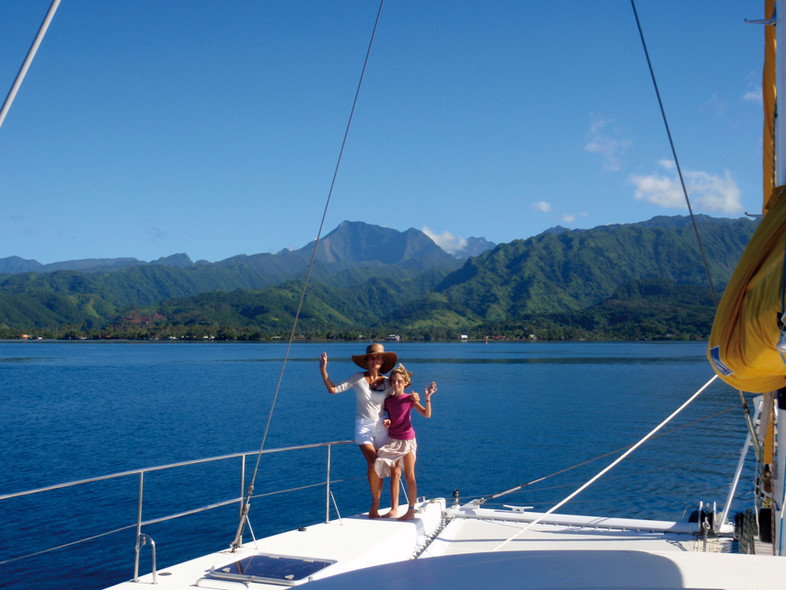
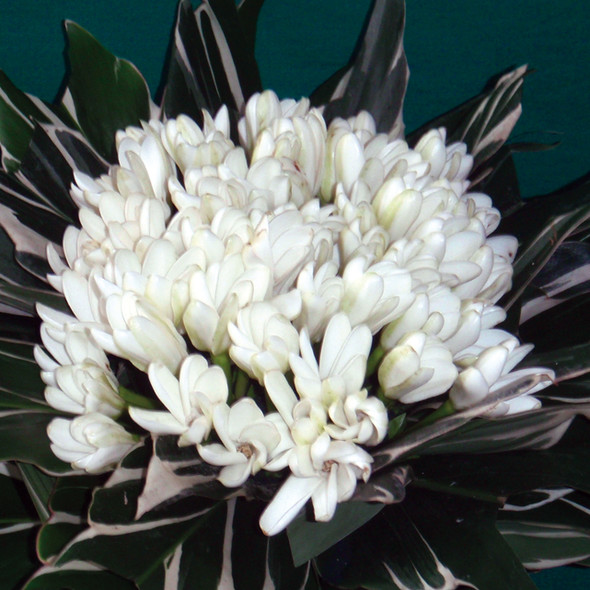
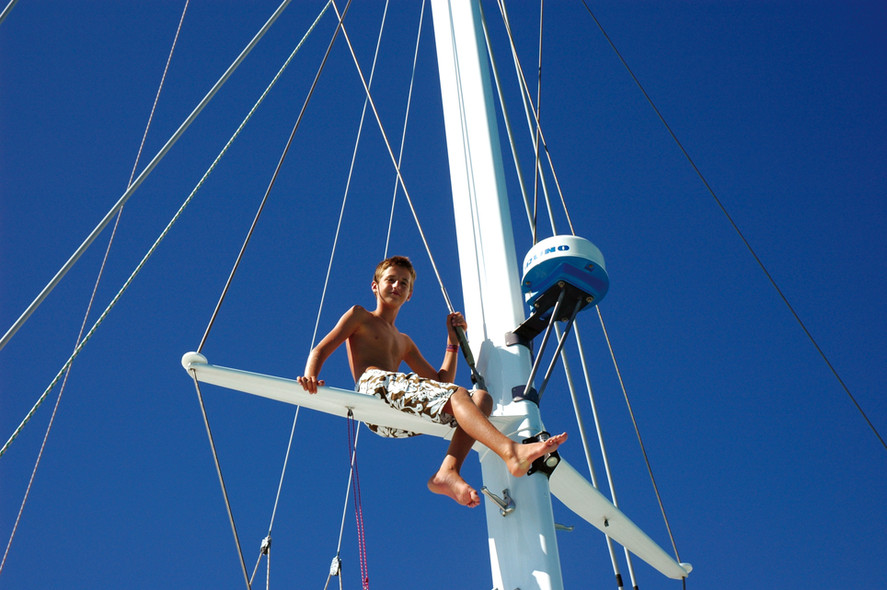
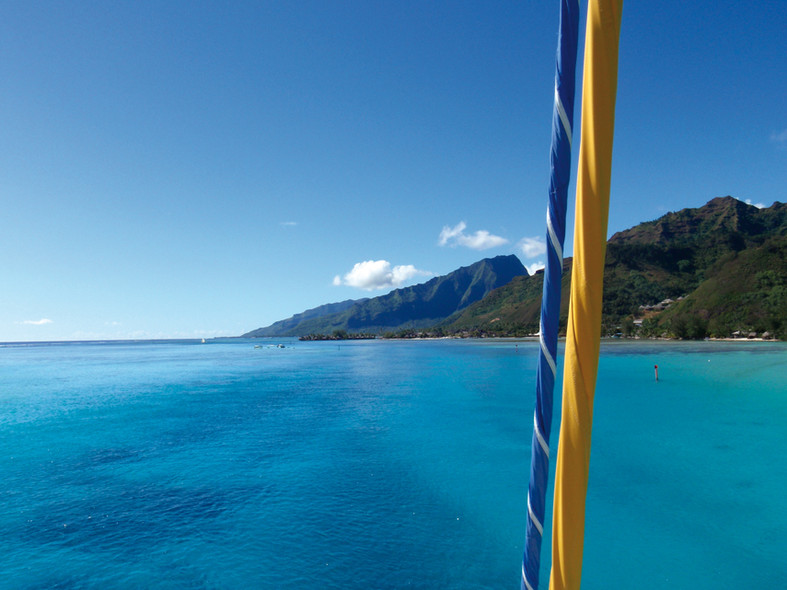
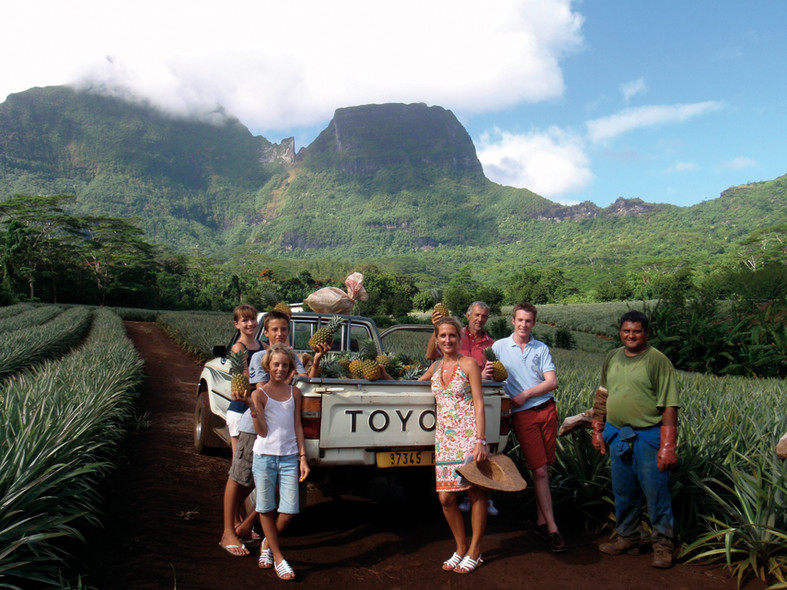
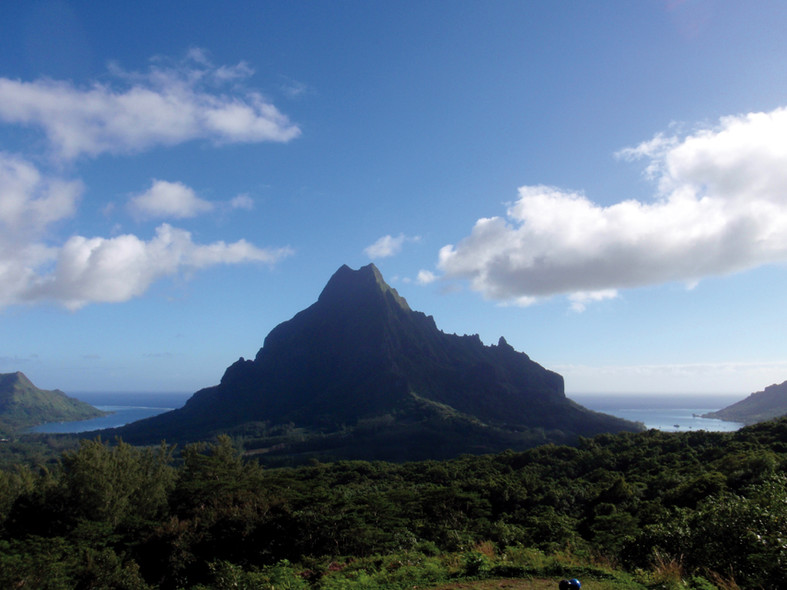
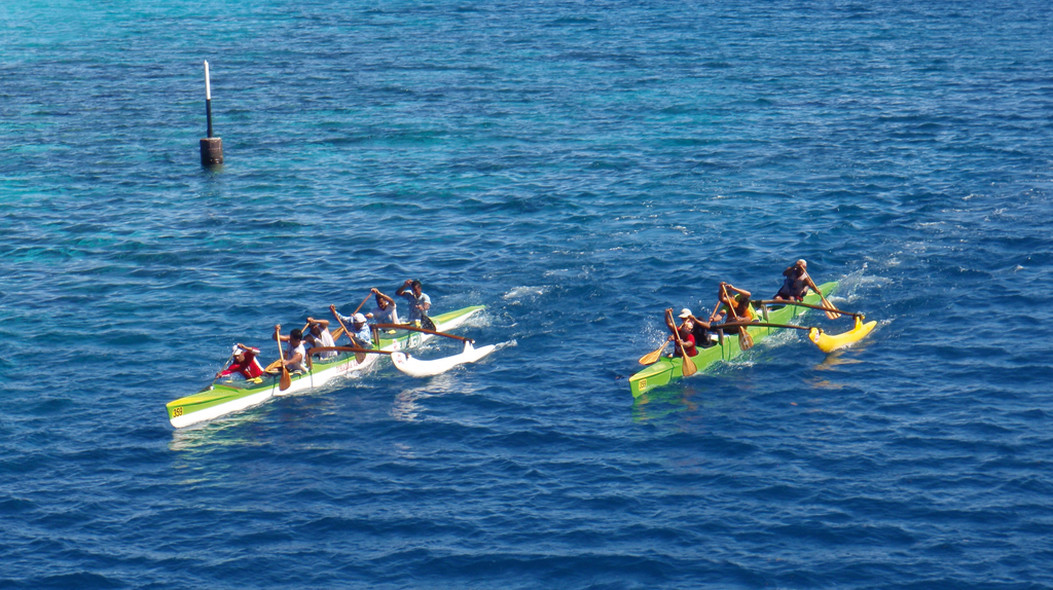
What readers think
Post a comment
No comments to show.